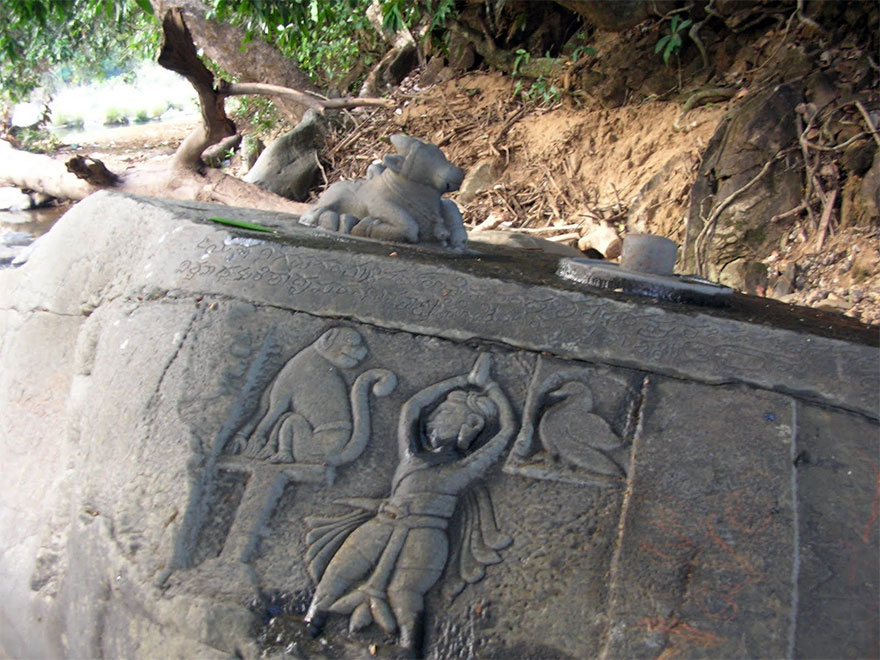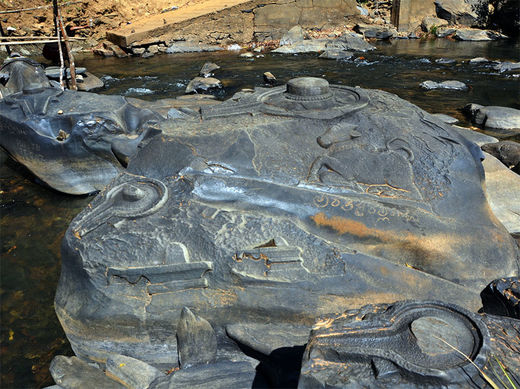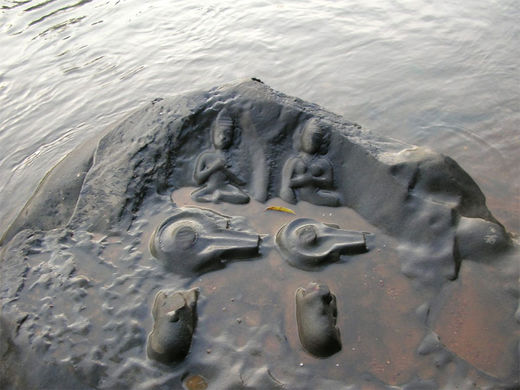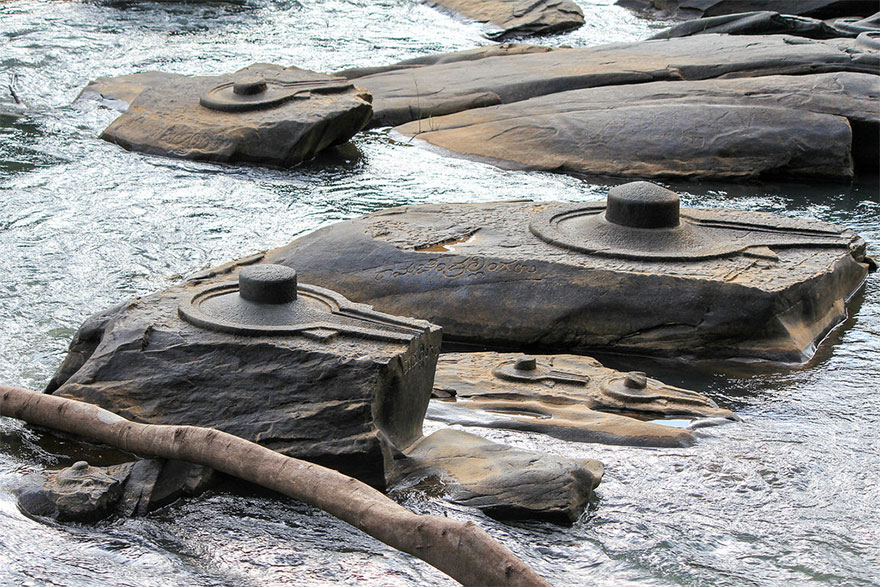The Indian River drains out for the first time revealing incredible ancient secrets
A mix of excessive water consumption and drought has driven the Shamala River to its brink for the first time in history, in Karnataka, India.

This lead to the discovery of artifacts on the banks of the river that shocked many archeologists around the world.
In short, dry weather has led to a reduction in the level of the Shalmala River in Karnataka, India, revealing numerous carvings (known as Shiva Lingas) in the rock bed of female and male sexual symbols, as well as of Nandi, i.e., the Hindu God Shiva’s bull mount.

The place is also called “Sahasralinga.” So many people visit it to pray to Lord Shivá, and it has become a very important pilgrimage site.
Additionally, Lingam is an illustration of the Hindu god Shiva and is in Hindu temples for worship and prayer. In turn, it is also known as Shiva Lingas.

During Shivratri, many pilgrims visit this site in India and offer pujas, the best time when the water level in the river is low and almost all Lingas are visible with their bases referred to as Yonis.
Every Linga has an individual bull carved facing towards them. Nobody actually knows when and who carved these Lingas.
However, it is believed that the King of Sirsi, Sadashivaraya, might have ordered their building during his reign (1678 – 1718.)
Located in the Indian state of Karnataka, near the place called Sirsi, Sashasralinga is listed among the most incredible places that India can offer.
It is also the manifestation of divine power as well as positive energy.
The large number of Shiva Lingas discovered as a result of the draught is evidence that there are numerous places in the world that still hold secrets of our ancestors, secrets that archaeologists are bringing out to light.
We really hope they will be properly preserved and people will pay respect to their historical value and tradition.







